One of the biggest issues in the beef industry is the level of risk involved without having any foresight of the price that the animal will be at the end of the production cycle.
Our industry is changing, with finishing being left to a couple of hundred mega finishers, finishing thousands of cattle in close communication with factories and processors.
Smaller finishers have walked away, citing the high risk and low level of profitability as the main reasons for exiting.
Kildare man, Adam Buitelaar, reckons he could have the answer with his beef bed-and-breakfast model.
Contract rearing is well established in the dairy herd, with replacement heifers being reared on drystock farms around the country. Beef farmers who have also taken this route praise the regular income and degree of stability as some of the positives of the contract rearing system.
You get a daily rearing fee without the financial outlay of purchasing an animal. You get paid for hitting targets, in terms of weight gain, etc, so if you do a good job, you get paid well.
Beef farmers who have also taken this route praise the regular income and degree of stability
While contract rearing is very popular in dairy circles, it is less so in the beef industry.
Adam Buitelaar wants to change all that. His new concept, based around Longhorn beef crossed with the dairy herd, aims to pay rearing farmers €2/kg liveweight gained on their farm for the duration of their life on the contract rearer’s farm.
The rearing farmer will have no financial outlay for the purchase of the calf, and then gets paid €2/kg for every kilogram gained on their farm.
The rearer is responsible for all other costs, feed, fertiliser, animal health costs, etc. When the animal is finished (under 24 months), they are weighed and slaughtered by the Buitelaar group. The rearer gets paid once the animal is weighed on leaving the farm.
Adam Buitelaar is also paying a €50/head regenerative farming bonus to help farmers comply with the regenerative farming protocol as part of the scheme.
Who is Adam Buitelaar?
Born in Holland, Adam came to Ireland in 1997 to work as a translator, but fell in love with the country and never went home.
In 2002, he started exporting calves to the Netherlands, and in 2004, he started a rose veal operation in conjunction with Slaney Foods.
In 2007, Adam went to England to set up a system, which started with 10 calves a week and now processes nearly 1,000 a week.
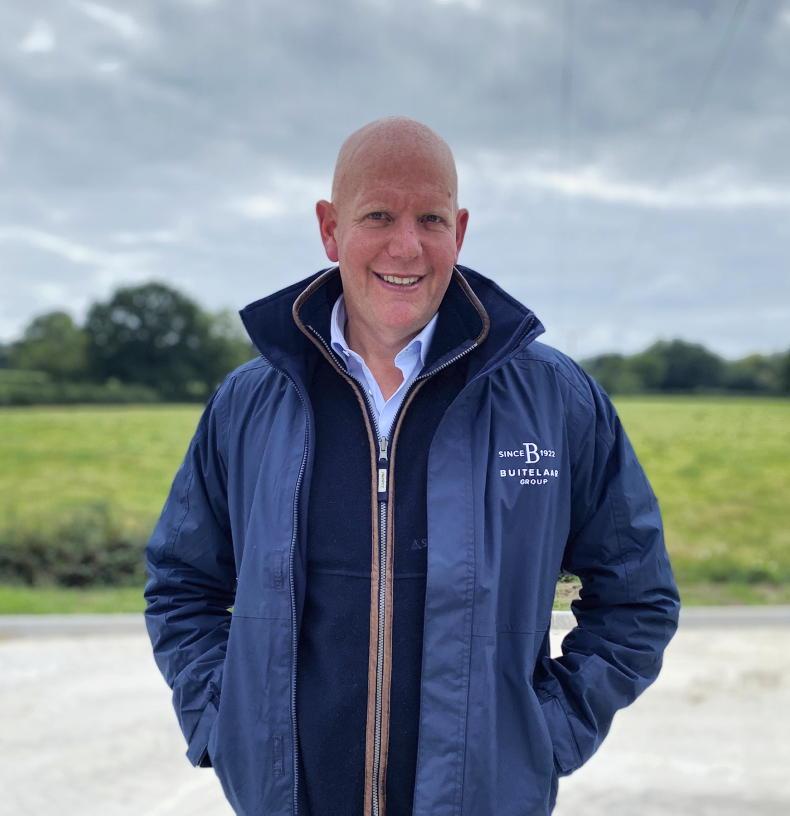
Adam Buitelaar, CEO of the Buitelaar Group.
Buitelaar controls the supply chain from AI straw to the marketing and sales of the meat cuts, and is now the UK’s largest integrated supply chain.
In recent years, Buitelaar has brought most of the calf rearing inhouse, retaining ownership of the cattle, and they own 36,000 head of cattle in the UK.
How will the scheme work?
It’s a relatively simple concept: Buitelaar has his sums done and he reckons he can pay farmers €2/kg liveweight gained to rear his cattle.
He reckons, based on his figures, that rearing farmers can achieve a decent margin and he will also make money, otherwise he wouldn’t be doing it.
The model is based around Buitelaar tapping into high-end markets and pitching his unique Longhorn beef into some of the highest priced retail and restaurant markets around the world.
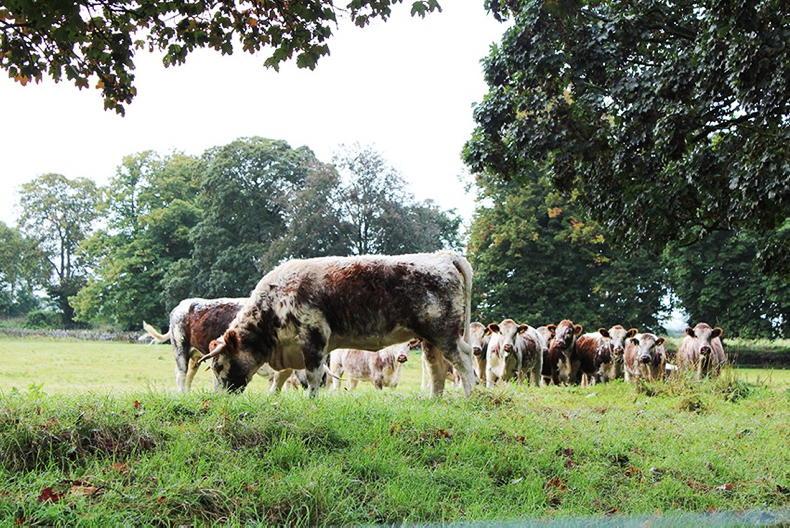
The Buitelaars reared 500 Longhorn cross calves this spring, with the 2023-born progeny due to be slaughtered from the end of summer 2024.
“I don’t think we as a country are doing enough to get into the very highest priced markets. My model is to market and brand the beef for what it is: one of the best products in the world,” Buitelaar said.
Buitelaar has big plans for building his Longhorn brand. He purchased Prumplestown Estate, Castledermot in Co Kildare two years ago and has lodged a planning application to make it into a “chef’s resort”.
“We want to be able to bring chefs from around the world to Prumplestown Estate, and show them exactly what we are doing and how we are doing it. We have an unbelievable story to tell consumers.
"I don’t think we are doing a good enough job at that at the moment, and I want to change that,” he said.
What’s in it for the dairy farmer?
The Buitelaar Group look after all the logistics of the scheme, from conception of the calf to cutting the steak on the plate. They select dairy farms with less than 5% crossbreeding within the cows in the dairy herd.
The Buitelaar Group select the Longhorn bulls that need to be used on the dairy herd and it’s up to the dairy farmer to purchase these AI straws, from either Progressive Genetics or World Wide Sires.
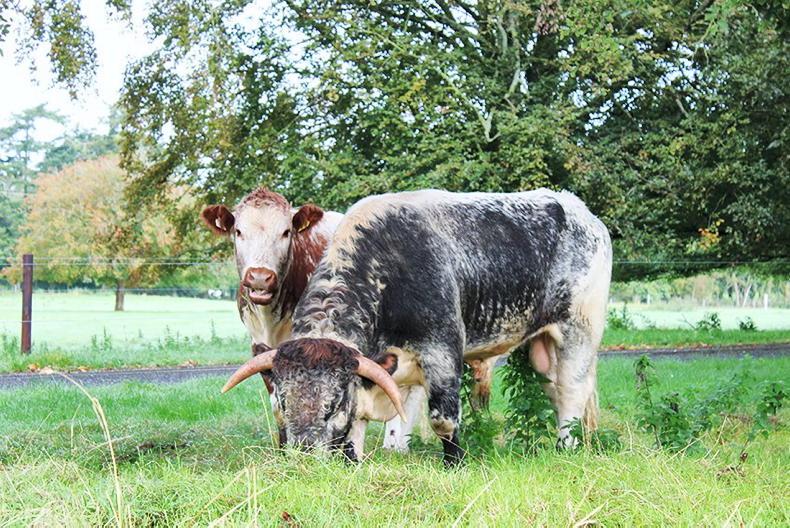
Adam chose the Longhorn breed for their meat quality, history and heritage, along with being differentiable from other beef.
Once the calf hits a few criteria, Adam Buitelaar will buy back the dairy-beef calves, paying €250/head for the bull calves and €200/head for the heifer calves.
All calves are tested for immunity to make sure that they have received enough colostrum. Calves with low scores will not be purchased by the group.
Calves must be a minimum of 60kg liveweight at the point of sale. The group have 2,000 calves that were born in 2023 out on farms in Ireland at the moment, with a further 9,400 straws used on dairy farms for the 2024 calving season.
One of the big questions that might be asked is: “Why Longhorn and why not stock with the tried and tested Aberdeen Angus and Hereford breeds?” The major element is the point of difference.
Point of
difference
The meat industry would always say that to go into any market, you need a point of difference or a unique selling point, and Buitelaar gets that with the Longhorn breed. The Longhorn breed also ticks a lot of boxes for what Adam wants to do with his Longhorn brand.
Ticks the boxes
“The Longhorn breed has very little genetic interference and requires minimal meal feeding. They lay down intramuscular fat easily, and are extremely hardy and healthy animals.
“For the dairy farmer, they are very easy calving, with a hardy and alert calf at birth. It sits well on a menu and ticks the boxes for our story for the high-end market, not the commodity market,” Buitelaar concluded.
Another unique part of the scheme is that the Buitelaar Group will pay an up-to-€50/head Regen bonus, based on beef farmers selecting different regenerative farming methods on their farm.
All farmers involved in the scheme have to sign up to Herdwatch for monitoring purposes. The group will offer a €3/head bonus for cattle finished under 22 months.
A €2/head bonus will also be paid where carbon footprinting is carried out on the farm. A further €3/head bonus will be paid where 25% of the farm is soil-tested annually.
If cattle are fenced out of watercourses on the farm, a further €2/head bonus will be paid.
The proposed model brought forward by the Buitelaar group is an interesting one. It won’t be for everybody, but farmers can make that choice at the beginning as to whether they engage or not.
If you do opt in, the Buitelaar Group have gone to great lengths to make everything as transparent as they can for all parties involved – a breath of fresh air to the ‘cloak and dagger’ tactics employed by the current finishing arrangements in the industry.
For farmers who want to have a minimum capital spend for a low-risk, stable income, it looks like a good option.
Performance will be important in the scheme. If cattle don’t put on weight on the beef farm, they won’t make money. If you have 100 animals on your farm doing 0.8/kg/day, that’s €160/day for the herd or €1.60/day for each animal.
The beef farmer knows the end price, so it’s up to them to make sure performance is good and costs are kept low.
Grazed grass, top-quality silage and healthy animals will all be key components to its success.
Buitelaar has a big vision for his Longhorn brand, which could become popular with both dairy and beef farmers by the year’s ahead.
One of the biggest issues in the beef industry is the level of risk involved without having any foresight of the price that the animal will be at the end of the production cycle.
Our industry is changing, with finishing being left to a couple of hundred mega finishers, finishing thousands of cattle in close communication with factories and processors.
Smaller finishers have walked away, citing the high risk and low level of profitability as the main reasons for exiting.
Kildare man, Adam Buitelaar, reckons he could have the answer with his beef bed-and-breakfast model.
Contract rearing is well established in the dairy herd, with replacement heifers being reared on drystock farms around the country. Beef farmers who have also taken this route praise the regular income and degree of stability as some of the positives of the contract rearing system.
You get a daily rearing fee without the financial outlay of purchasing an animal. You get paid for hitting targets, in terms of weight gain, etc, so if you do a good job, you get paid well.
Beef farmers who have also taken this route praise the regular income and degree of stability
While contract rearing is very popular in dairy circles, it is less so in the beef industry.
Adam Buitelaar wants to change all that. His new concept, based around Longhorn beef crossed with the dairy herd, aims to pay rearing farmers €2/kg liveweight gained on their farm for the duration of their life on the contract rearer’s farm.
The rearing farmer will have no financial outlay for the purchase of the calf, and then gets paid €2/kg for every kilogram gained on their farm.
The rearer is responsible for all other costs, feed, fertiliser, animal health costs, etc. When the animal is finished (under 24 months), they are weighed and slaughtered by the Buitelaar group. The rearer gets paid once the animal is weighed on leaving the farm.
Adam Buitelaar is also paying a €50/head regenerative farming bonus to help farmers comply with the regenerative farming protocol as part of the scheme.
Who is Adam Buitelaar?
Born in Holland, Adam came to Ireland in 1997 to work as a translator, but fell in love with the country and never went home.
In 2002, he started exporting calves to the Netherlands, and in 2004, he started a rose veal operation in conjunction with Slaney Foods.
In 2007, Adam went to England to set up a system, which started with 10 calves a week and now processes nearly 1,000 a week.

Adam Buitelaar, CEO of the Buitelaar Group.
Buitelaar controls the supply chain from AI straw to the marketing and sales of the meat cuts, and is now the UK’s largest integrated supply chain.
In recent years, Buitelaar has brought most of the calf rearing inhouse, retaining ownership of the cattle, and they own 36,000 head of cattle in the UK.
How will the scheme work?
It’s a relatively simple concept: Buitelaar has his sums done and he reckons he can pay farmers €2/kg liveweight gained to rear his cattle.
He reckons, based on his figures, that rearing farmers can achieve a decent margin and he will also make money, otherwise he wouldn’t be doing it.
The model is based around Buitelaar tapping into high-end markets and pitching his unique Longhorn beef into some of the highest priced retail and restaurant markets around the world.

The Buitelaars reared 500 Longhorn cross calves this spring, with the 2023-born progeny due to be slaughtered from the end of summer 2024.
“I don’t think we as a country are doing enough to get into the very highest priced markets. My model is to market and brand the beef for what it is: one of the best products in the world,” Buitelaar said.
Buitelaar has big plans for building his Longhorn brand. He purchased Prumplestown Estate, Castledermot in Co Kildare two years ago and has lodged a planning application to make it into a “chef’s resort”.
“We want to be able to bring chefs from around the world to Prumplestown Estate, and show them exactly what we are doing and how we are doing it. We have an unbelievable story to tell consumers.
"I don’t think we are doing a good enough job at that at the moment, and I want to change that,” he said.
What’s in it for the dairy farmer?
The Buitelaar Group look after all the logistics of the scheme, from conception of the calf to cutting the steak on the plate. They select dairy farms with less than 5% crossbreeding within the cows in the dairy herd.
The Buitelaar Group select the Longhorn bulls that need to be used on the dairy herd and it’s up to the dairy farmer to purchase these AI straws, from either Progressive Genetics or World Wide Sires.

Adam chose the Longhorn breed for their meat quality, history and heritage, along with being differentiable from other beef.
Once the calf hits a few criteria, Adam Buitelaar will buy back the dairy-beef calves, paying €250/head for the bull calves and €200/head for the heifer calves.
All calves are tested for immunity to make sure that they have received enough colostrum. Calves with low scores will not be purchased by the group.
Calves must be a minimum of 60kg liveweight at the point of sale. The group have 2,000 calves that were born in 2023 out on farms in Ireland at the moment, with a further 9,400 straws used on dairy farms for the 2024 calving season.
One of the big questions that might be asked is: “Why Longhorn and why not stock with the tried and tested Aberdeen Angus and Hereford breeds?” The major element is the point of difference.
Point of
difference
The meat industry would always say that to go into any market, you need a point of difference or a unique selling point, and Buitelaar gets that with the Longhorn breed. The Longhorn breed also ticks a lot of boxes for what Adam wants to do with his Longhorn brand.
Ticks the boxes
“The Longhorn breed has very little genetic interference and requires minimal meal feeding. They lay down intramuscular fat easily, and are extremely hardy and healthy animals.
“For the dairy farmer, they are very easy calving, with a hardy and alert calf at birth. It sits well on a menu and ticks the boxes for our story for the high-end market, not the commodity market,” Buitelaar concluded.
Another unique part of the scheme is that the Buitelaar Group will pay an up-to-€50/head Regen bonus, based on beef farmers selecting different regenerative farming methods on their farm.
All farmers involved in the scheme have to sign up to Herdwatch for monitoring purposes. The group will offer a €3/head bonus for cattle finished under 22 months.
A €2/head bonus will also be paid where carbon footprinting is carried out on the farm. A further €3/head bonus will be paid where 25% of the farm is soil-tested annually.
If cattle are fenced out of watercourses on the farm, a further €2/head bonus will be paid.
The proposed model brought forward by the Buitelaar group is an interesting one. It won’t be for everybody, but farmers can make that choice at the beginning as to whether they engage or not.
If you do opt in, the Buitelaar Group have gone to great lengths to make everything as transparent as they can for all parties involved – a breath of fresh air to the ‘cloak and dagger’ tactics employed by the current finishing arrangements in the industry.
For farmers who want to have a minimum capital spend for a low-risk, stable income, it looks like a good option.
Performance will be important in the scheme. If cattle don’t put on weight on the beef farm, they won’t make money. If you have 100 animals on your farm doing 0.8/kg/day, that’s €160/day for the herd or €1.60/day for each animal.
The beef farmer knows the end price, so it’s up to them to make sure performance is good and costs are kept low.
Grazed grass, top-quality silage and healthy animals will all be key components to its success.
Buitelaar has a big vision for his Longhorn brand, which could become popular with both dairy and beef farmers by the year’s ahead.







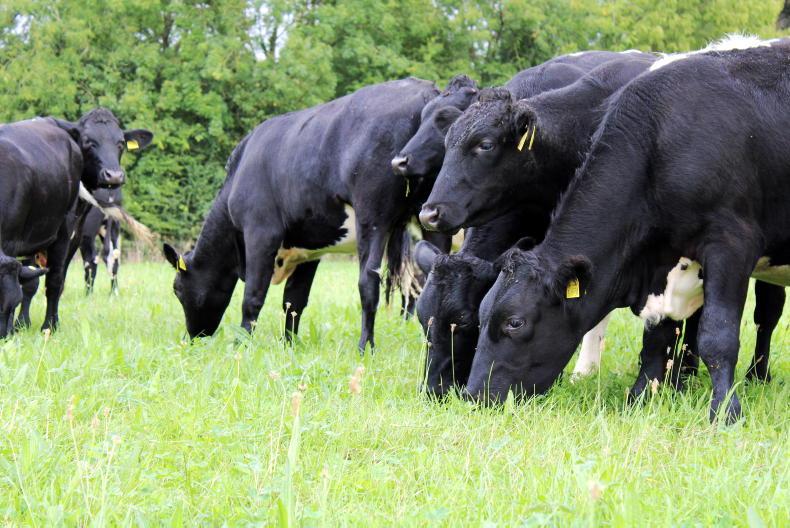
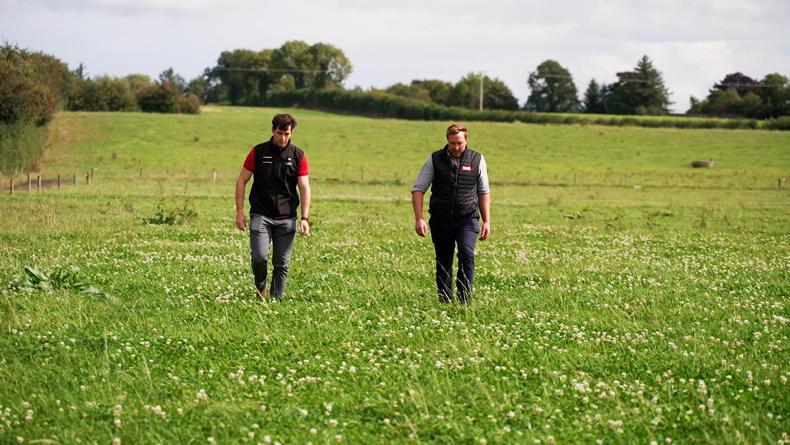
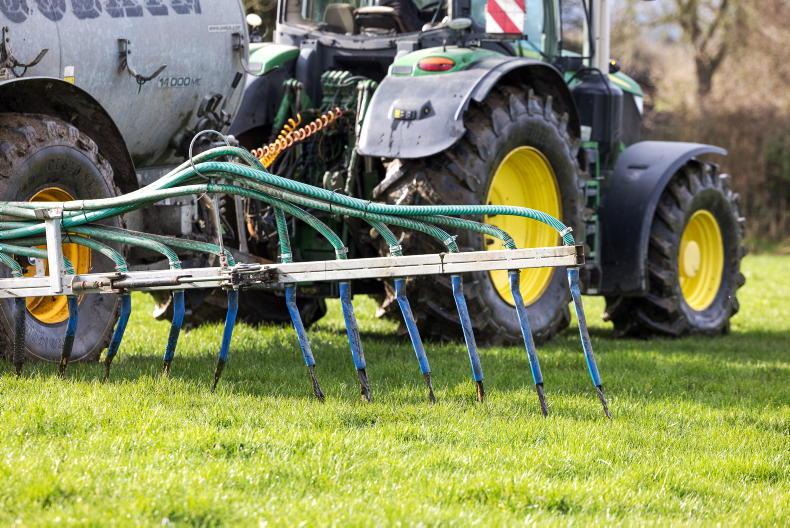
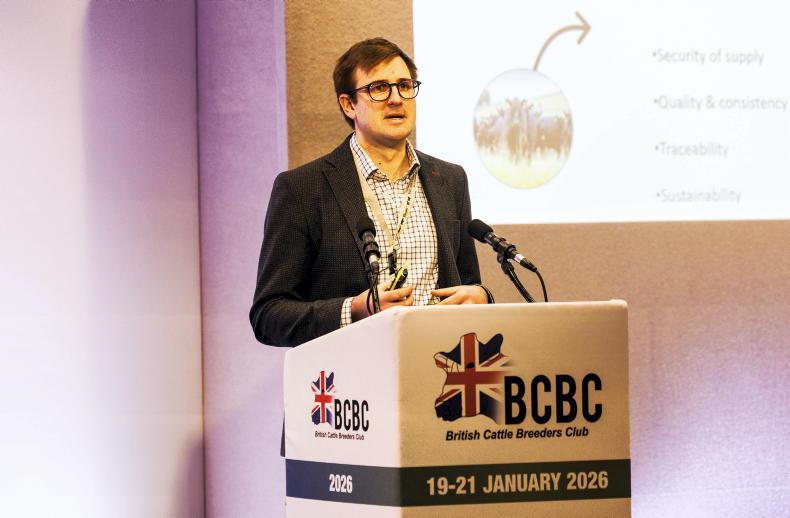
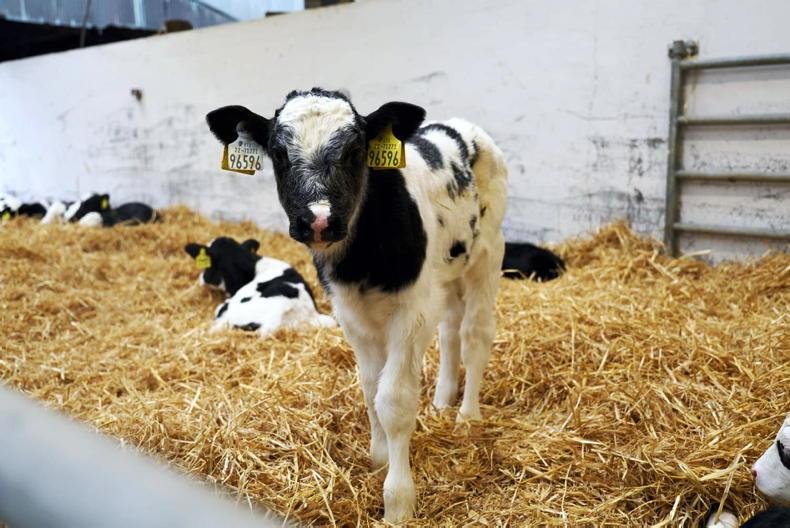
SHARING OPTIONS